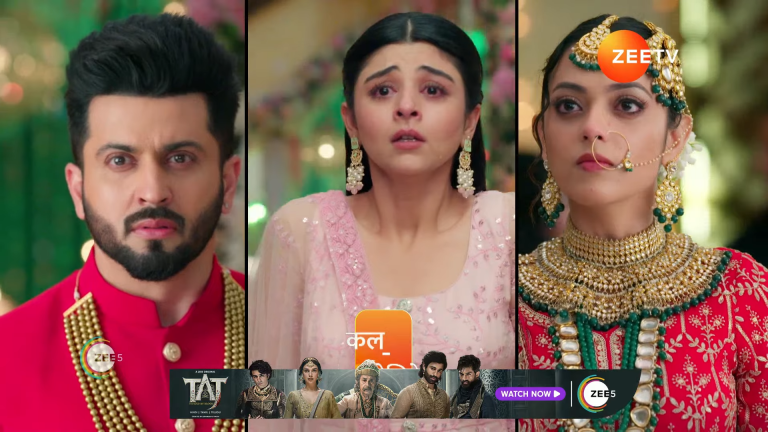Journey Through Time with Shrimad Ramayan An Epic Tale of Valor and Virtue

The Shrimad Ramayan is more than just an ancient text; it’s a timeless narrative that has shaped the spiritual and cultural landscape of Hindu philosophy. For those who are captivated by Hindu mythology, literature enthusiasts, and history buffs alike, exploring this epic offers an enriching experience steeped in intrigue and wisdom. In this blog post, we’ll unravel the key facets of Shrimad Ramayan, drawing connections to its relevance today while offering insights into its profound messages. Whether you’re new to the Epic of Ramayana or revisiting its depths, this exploration promises to enrich your understanding and appreciation of this seminal work.
The Timeless Allure of Shrimad Ramayan
Why does the Shrimad Ramayan endure through the ages? Its timeless appeal lies in the universal themes it explores—such as the struggle between good and evil, the importance of dharma (duty), and the virtues of sacrifice and devotion. These themes resonate with audiences across centuries, as they embody the essence of human experiences and moral dilemmas. The narrative intricately weaves together the lives of its characters, offering lessons that are as applicable today as they were thousands of years ago.
The epic’s poetic style is another reason for its enduring charm. Written in the majestic Sanskrit language, the verses of the Shrimad Ramayan possess a lyrical beauty that elevates the storytelling. This has inspired countless retellings and adaptations in different languages and cultures, each preserving the core essence while adding unique local colors.
Furthermore, the Shrimad Ramayan is not just a story; it serves as a spiritual guide. For many Hindus, it offers practical wisdom and ethical teachings, aiding individuals in navigating life’s challenges. This multidimensional aspect makes it a source of perennial learning and spiritual enrichment.

Exploring the Characters of Shrimad Ramayan
The characters of the Shrimad Ramayan are the heart of the epic, each representing different facets of human nature and ideals. Lord Rama, the protagonist, is an embodiment of virtue, righteousness, and honor. His unwavering commitment to dharma sets a benchmark for ethical conduct and leadership, making him a revered figure in Hindu mythology.
Sita, Rama’s devoted wife, symbolizes purity, strength, and resilience. Her trials and tribulations throughout the epic highlight the importance of patience, faith, and inner strength. Sita’s character continues to inspire countless individuals, serving as a model of grace under pressure.
Other significant characters include Lakshmana, Rama’s loyal brother, Hanuman, the devoted monkey deity, and Ravana, the formidable antagonist. Each character adds depth and complexity to the narrative, offering unique perspectives and lessons. Through their interactions and choices, the Shrimad Ramayan conveys profound insights into the human condition and the moral fabric of society.
The Moral Compass of the Epic
At its core, the Shrimad Ramayan is a moral compass that guides individuals towards righteous living. The concept of dharma is central to the epic, emphasizing the importance of fulfilling one’s duties and responsibilities with integrity. This principle is exemplified in the actions and decisions of the characters, serving as a reminder of the ethical imperatives that govern human life.
The epic also underscores the significance of devotion and sacrifice. Characters like Hanuman and Bharata exemplify selflessness and unwavering devotion, inspiring individuals to prioritize collective well-being over personal gain. These virtues are portrayed as essential for achieving harmony and balance in life.
Furthermore, the Shrimad Ramayan highlights the consequences of adharma, or unrighteousness. Through the downfall of characters like Ravana, it warns against the perils of ego, greed, and moral transgressions. This dichotomy between good and evil serves as a powerful reminder of the ethical choices that shape our destiny.
Shrimad Ramayan’s Influence on Indian Culture
The impact of the Shrimad Ramayan on Indian culture is profound and far-reaching. Its stories, characters, and values have permeated various aspects of cultural expression, including art, music, dance, and theater. The epic has inspired countless works of literature, from classical poetry to contemporary novels, each offering new interpretations and insights.
In addition to its literary influence, the Shrimad Ramayan plays a crucial role in religious and spiritual practices. It is recited and performed during festivals and religious ceremonies, fostering a sense of community and shared heritage. The epic’s teachings continue to guide the spiritual journeys of millions, shaping their beliefs and practices.
The Shrimad Ramayan’s cultural resonance extends beyond India, influencing diasporic communities and global audiences. Its universal themes and timeless wisdom have transcended geographical boundaries, making it a cherished part of the world’s cultural heritage.
The Structure and Composition of Shrimad Ramayan
Understanding the structure and composition of the Shrimad Ramayan enhances our appreciation of its narrative richness. The epic is traditionally divided into seven kandas, or books, each focusing on different phases of Lord Rama’s life and the central plot. These include Bala Kanda (childhood), Ayodhya Kanda (life in Ayodhya), Aranya Kanda (forest exile), Kishkindha Kanda (monkey kingdom), Sundara Kanda (Hanuman’s exploits), Yuddha Kanda (the great war), and Uttara Kanda (climactic events).
Each kanda is composed of sargas, or chapters, which further break down the narrative into manageable sections. This division facilitates a detailed exploration of events and character developments while maintaining a cohesive storyline. The structured approach allows readers to engage with the epic at various levels, from surface narratives to deeper philosophical reflections.
Valmiki, the revered sage and author of the Shrimad Ramayan, employed various literary devices and poetic techniques to enhance the storytelling. Through similes, metaphors, and vivid imagery, he captured the essence of the characters and settings, creating an immersive experience for readers.
The Historical Context of Shrimad Ramayan
To fully appreciate the Shrimad Ramayan, it is essential to consider its historical context. The epic is believed to have been composed around the 5th to 4th century BCE, during a time of significant social and political transformation in ancient India. This period saw the rise of powerful kingdoms, the spread of Vedic culture, and the emergence of new philosophical and religious ideas.
The Shrimad Ramayan reflects these historical dynamics, offering insights into the societal norms and values of the time. The portrayal of ideal rulers, familial relationships, and social hierarchies provides a glimpse into the moral and cultural fabric of ancient Indian society.
While the Shrimad Ramayan is rooted in its historical context, it transcends temporal boundaries, offering timeless wisdom and guidance. Its themes and lessons continue to resonate with audiences across generations, making it a living testament to the enduring power of storytelling.
The Global Reach of Shrimad Ramayan
The influence of the Shrimad Ramayan extends far beyond the Indian subcontinent, reaching diverse cultures and communities worldwide. Its universal themes of love, duty, and justice have resonated with audiences across Asia, Southeast Asia, and beyond. The epic has inspired a rich tapestry of adaptations, from traditional performances in Indonesia and Thailand to modern interpretations in Western literature and cinema.
These cross-cultural adaptations reflect the enduring appeal and relevance of the Shrimad Ramayan. They showcase the epic’s ability to transcend cultural boundaries, fostering a sense of shared humanity and understanding. The global reach of the Shrimad Ramayan underscores its status as a world literary classic, celebrated and cherished by diverse communities.

The Shrimad Ramayan and Modern Literature
The Shrimad Ramayan continues to inspire contemporary writers and artists, influencing modern literature and creative expressions. Its timeless themes and characters have found resonance in various genres, from graphic novels to fantasy fiction. Writers have drawn upon the epic’s rich narrative and philosophical depth to explore new perspectives and storytelling techniques.
In addition to literary adaptations, the Shrimad Ramayan has influenced popular media, including films, television shows, and digital content. Its stories and characters serve as a source of inspiration for creators seeking to convey universal truths and values.
The enduring presence of the Shrimad Ramayan in modern literature and media highlights its continued relevance and cultural significance. It serves as a testament to the power of storytelling to transcend time and space, connecting individuals and communities through shared narratives.
Shrimad Ramayan’s Philosophical Insights
Beyond its narrative and cultural significance, the Shrimad Ramayan offers profound philosophical insights that continue to resonate with readers. The epic explores the nature of dharma, or righteousness, emphasizing the importance of adhering to ethical principles in the face of challenges and adversity.
The Shrimad Ramayan also addresses the concepts of karma and destiny, highlighting the interplay between individual actions and cosmic order. Through its characters and events, the epic illustrates the consequences of moral choices and the potential for redemption and transformation.
Furthermore, the Shrimad Ramayan offers insights into the nature of human relationships, exploring themes of love, loyalty, and sacrifice. It emphasizes the importance of compassion, empathy, and understanding in fostering harmonious connections and overcoming differences.
Engaging with Shrimad Ramayan Today
For those interested in exploring the Shrimad Ramayan, there are numerous ways to engage with this epic work. Readers can access translations and commentaries in various languages, offering diverse perspectives and interpretations. Participating in discussions and study groups provides opportunities to deepen one’s understanding and appreciation of the epic’s themes and teachings.
Attending performances and adaptations of the Shrimad Ramayan, whether traditional or contemporary, offers an immersive and enriching experience. These events provide a platform to witness the epic come to life, fostering a sense of connection and community.
In addition to traditional media, digital platforms and resources offer innovative ways to explore the Shrimad Ramayan. Online courses, podcasts, and interactive content provide accessible and engaging avenues for learning and exploration.
Conclusion
The Shrimad Ramayan remains a timeless treasure, offering insights, inspiration, and guidance for individuals across cultures and generations. Its universal themes, profound teachings, and rich narrative continue to resonate with audiences, fostering a deeper understanding of the human experience.
For those captivated by Hindu mythology, literature enthusiasts, and history buffs alike, the Shrimad Ramayan offers a rich tapestry of stories and wisdom. Whether exploring its characters, themes, or cultural impact, engaging with this epic promises to enrich one’s perspective and appreciation.
As we continue to explore and celebrate the Shrimad Ramayan, its enduring relevance serves as a testament to the power of storytelling to inspire, connect, and transform. For further exploration, readers are encouraged to seek out additional resources and interpretations, deepening their engagement with this timeless epic.






